Key takeaways:
- Software development sprints enhance productivity by breaking complex projects into manageable tasks and fostering collaboration through daily stand-ups.
- Effective sprint planning establishes clear goals, reduces chaos, and enables teams to adapt quickly to changing requirements.
- Utilizing tools like Trello, Slack, and JIRA streamlines task management and communication, enhancing overall sprint productivity.
- Regular evaluation and reflection after sprints, including retrospectives, are essential for continuous improvement and fostering a culture of open dialogue within teams.
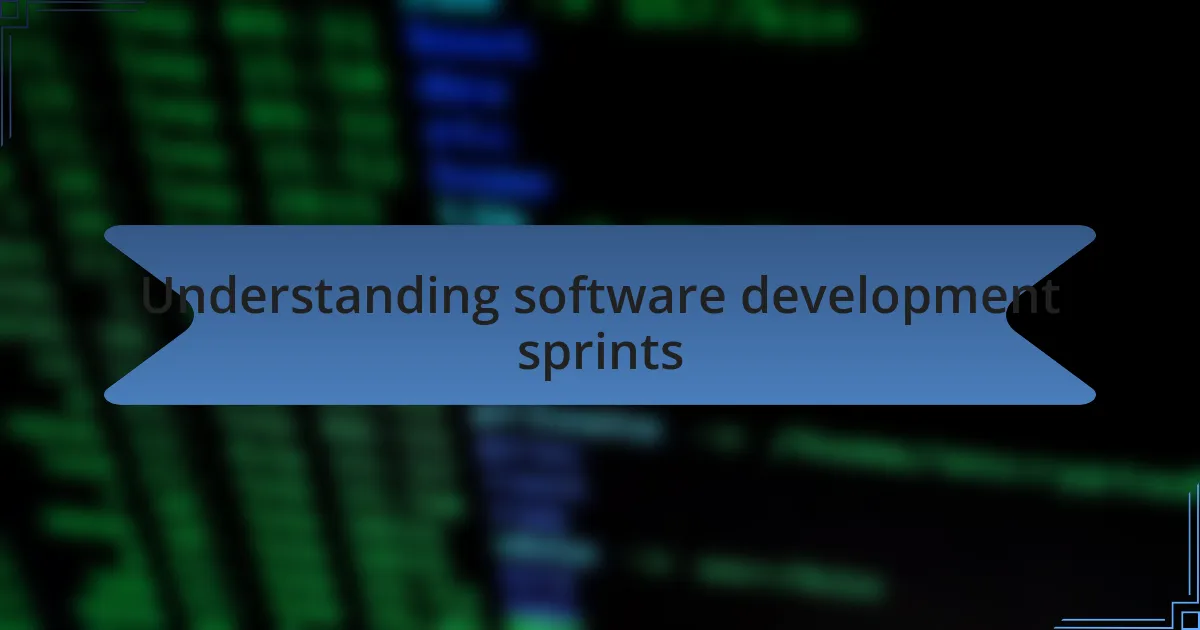
Understanding software development sprints
Software development sprints are a key component of Agile methodology, designed to create a structured, yet adaptive approach to project management. I remember my initial confusion about sprints, thinking they were just another corporate buzzword. But once I experienced a sprint firsthand, I quickly realized they’re about breaking down complex projects into manageable chunks, making it easier to track progress and adjust to changes.
Each sprint generally lasts from one to four weeks, during which a specific set of tasks is completed. In my own experience, these time-boxed efforts create an intense focus that drives productivity like nothing else. Have you ever found yourself overwhelmed by the sheer scope of a project? Sprints can alleviate that stress by allowing teams to concentrate on small victories, fostering a sense of accomplishment as goals are met within each cycle.
Collaboration is at the heart of successful sprints. I’ve witnessed how daily stand-up meetings keep everyone aligned and engaged, sparking conversations that can lead to breakthroughs. Isn’t it amazing how a simple check-in can transform a team’s dynamic? This rhythm of communication not only builds camaraderie but ensures that potential roadblocks are addressed promptly, enhancing the overall workflow.
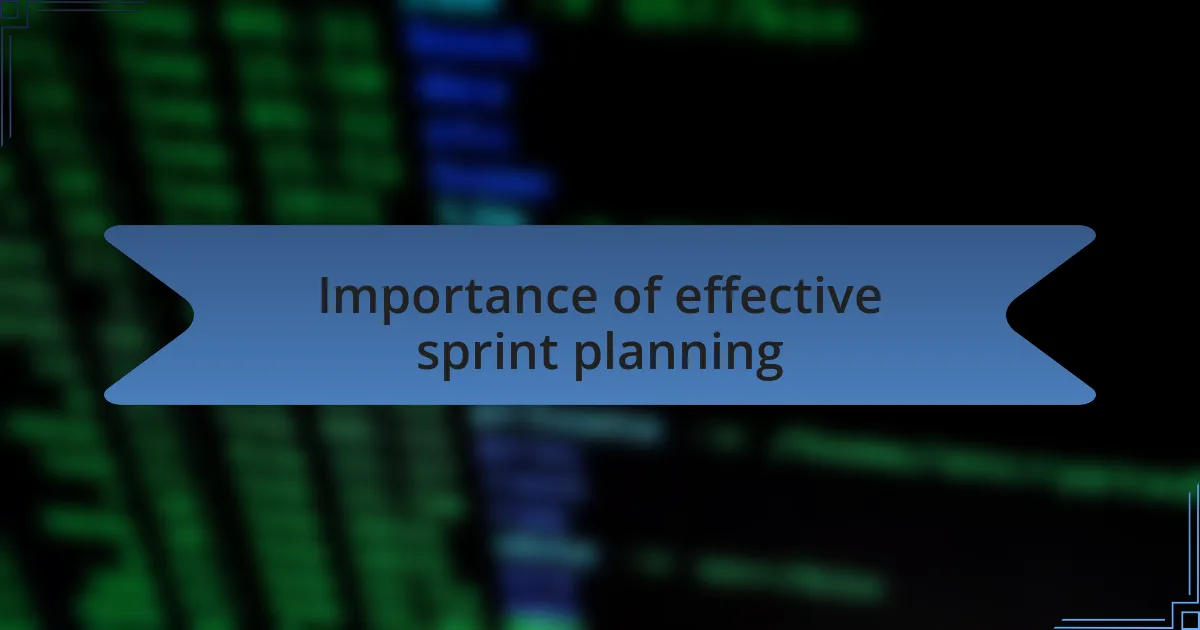
Importance of effective sprint planning
Effective sprint planning is crucial for setting clear expectations and aligning team goals. I’ve experienced the frustration of unorganized backlogs, where tasks seem overwhelming and priorities shift unexpectedly. When sprint planning is executed well, it transforms that chaos into a clear path—everyone knows what to work on and can visualize their progress.
During one memorable sprint, my team and I spent considerable time refining our planning sessions, which paid off significantly. By accurately estimating task durations and defining sprint goals, we not only created a realistic workload but also fostered a shared sense of ownership. I often think about how our genuine enthusiasm during these meetings laid the foundation for collaboration, turning each sprint into a canvas for our collective creativity.
Moreover, effective planning helps mitigate risks and helps the team adapt swiftly to changing requirements. Have you ever felt the weight of a project’s scope shifting mid-sprint? By evaluating potential challenges upfront, I’ve learned that we can pivot more effectively, minimizing disruptions. This proactive approach not only preserves momentum but also enhances team spirit, knowing that we can trust each other to handle uncertainties together.
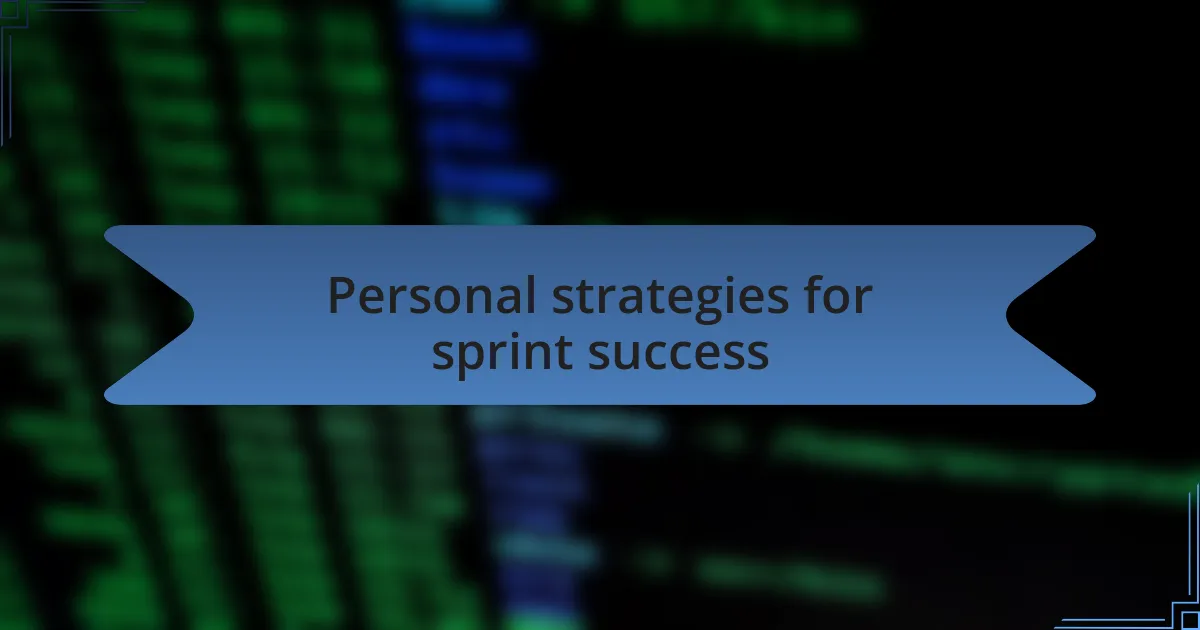
Personal strategies for sprint success
In my experience, I’ve found that breaking down tasks into smaller, manageable pieces during sprints dramatically boosts productivity. It’s one thing to have a grand goal, but when I outline the steps required to achieve that goal, it feels less daunting. For example, in one sprint, I tackled a particularly complex feature by dividing it into daily targets. This approach not only kept me focused but also gave me mini-wins that propelled my motivation forward. Have you ever noticed how checking tasks off a list can spark a sense of accomplishment?
I also prioritize regular check-ins with my team throughout the sprint. I remember a time when we implemented short daily stand-ups to discuss our progress. Even just 15 minutes of conversation helped surface potential issues before they became significant roadblocks. These brief sync-ups foster an atmosphere of accountability, encouraging us to support each other actively. I truly believe that maintaining open lines of communication pushes everyone to bring their best selves to each sprint.
Additionally, reflecting on what worked (or didn’t) after each sprint has become invaluable for my growth as a developer. I typically spend time jotting down notes on challenges faced and strategies that clicked for my personal workflow. By doing this, I can tweak my approach in future sprints to better align with my team’s dynamic. It’s fascinating how learning from past experiences can transform future endeavors—have you ever considered how much insight lies in reflection?
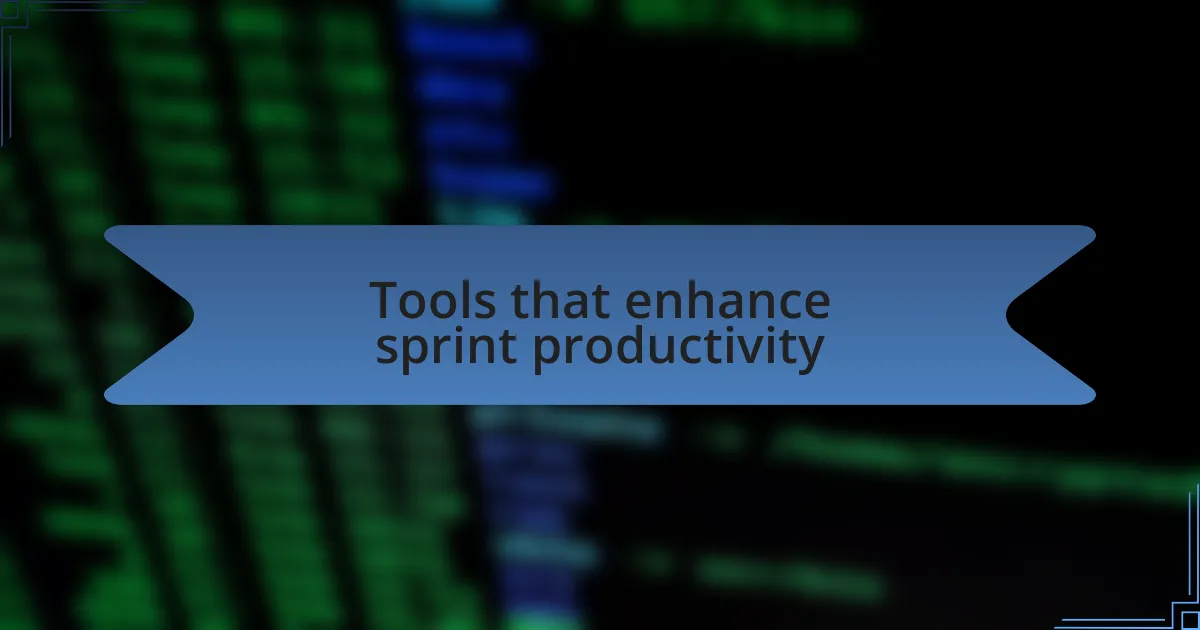
Tools that enhance sprint productivity
Tools play a critical role in enhancing sprint productivity. One tool that has consistently helped me is Trello. I recall working on a particularly busy sprint where I used Trello boards to visualize tasks. Seeing everything laid out helped not only in prioritizing what needed to be done but also in tracking progress. Have you ever felt the satisfaction of dragging a card from “In Progress” to “Done”? It’s a small win that keeps you engaged, isn’t it?
Another standout for me has been Slack for communication. During a recent project, the team created dedicated channels for different aspects of the sprint. This made it incredibly easy to share updates, ask questions, or even celebrate milestones without flooding our inboxes. It’s like having a virtual office space where everyone is just a message away—doesn’t that fuel a sense of community?
I also find that using JIRA for issue tracking streamlines the entire development process. There was a sprint where we faced unexpected bugs, and JIRA helped us create tickets swiftly and efficiently. This not only kept our focus sharp but also ensured that everyone was aligned on priorities. How do you think your team would benefit from having such a structured approach? It’s fascinating how the right tools can transform chaos into clarity during a sprint.
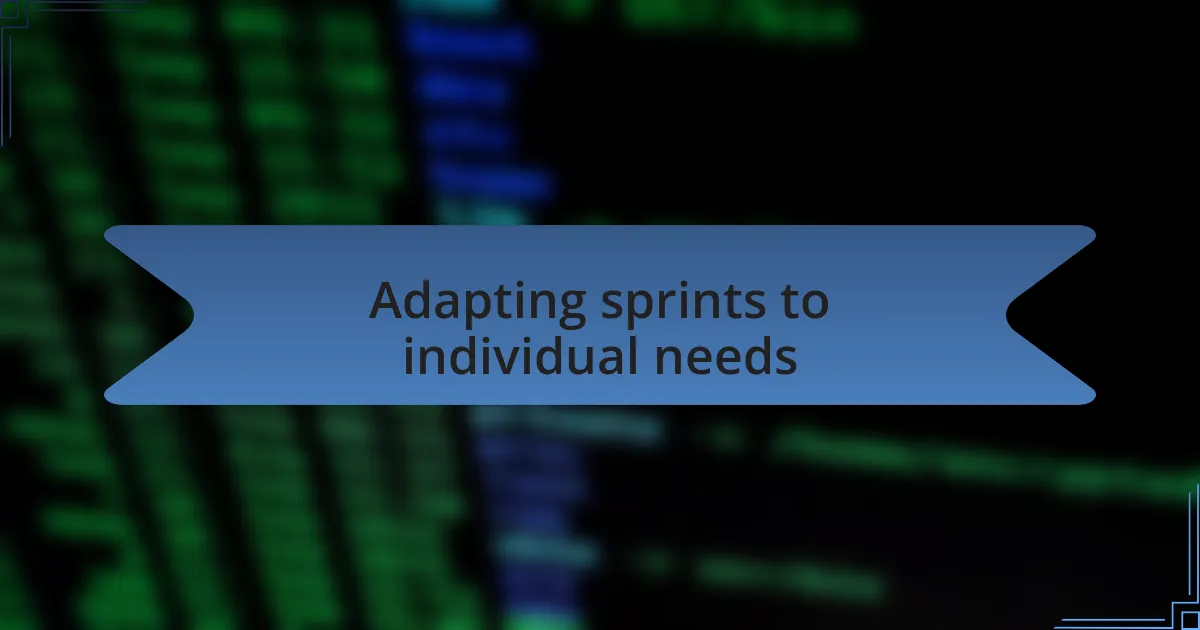
Adapting sprints to individual needs
When it comes to adapting sprints to individual needs, I’ve discovered that flexibility is crucial. For instance, I once had a teammate who thrived on detailed task lists, while another preferred broad themes. Tailoring the sprint backlog to reflect both approaches not only improved individual performance but also harmonized our collective efforts. Have you ever noticed how small adjustments can lead to a significant boost in motivation?
Another thing I often reflect on is the rhythm of our sprints. I remember a time when our team experimented with a slightly longer sprint cycle to accommodate deeper focus periods. This adaptation not only reduced the rush but also allowed us to dive into complex issues thoroughly. It’s amazing how slight tweaks in duration can affect creativity and productivity, isn’t it?
Finally, communication styles play a pivotal role in making sprints more effective. I’ve found that personalized check-ins, rather than one-size-fits-all stand-ups, can make all the difference. Listening to how team members prefer to express their challenges or successes has transformed my approach to collaboration. Isn’t it interesting how adjusting to individual preferences fosters a more inclusive and engaged team atmosphere?
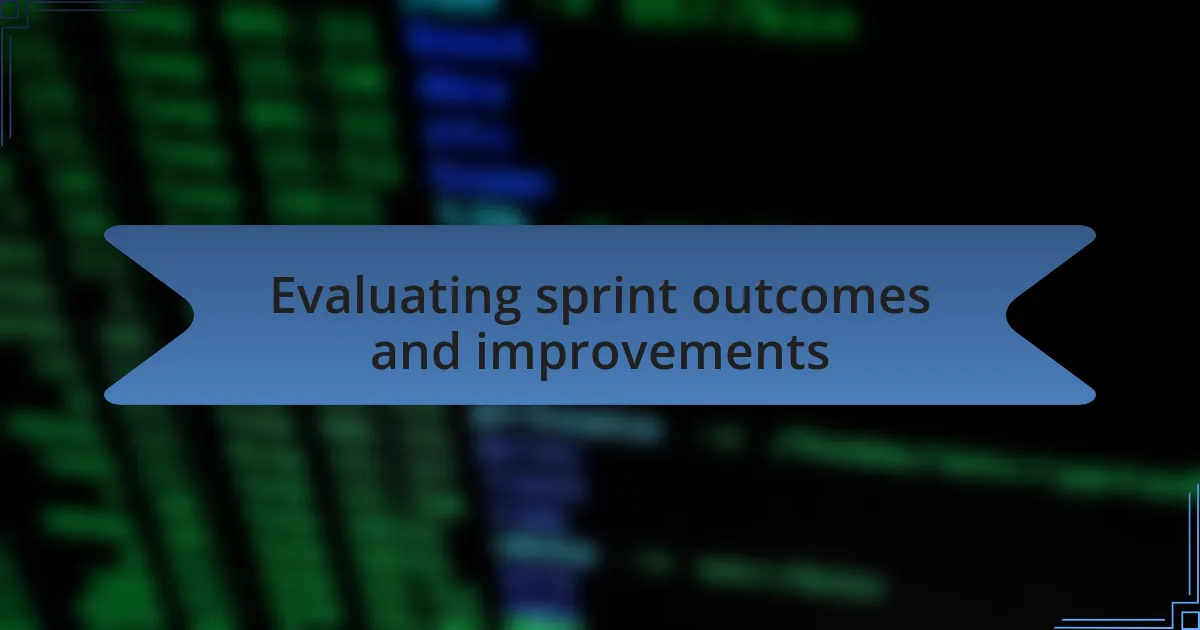
Evaluating sprint outcomes and improvements
Evaluating sprint outcomes is a critical step I never overlook. After each sprint, I’ve developed the habit of gathering the team for a retrospective meeting, where we dive deep into what worked and what didn’t. I recall a sprint where we launched a feature that our users loved, but instead of basking in that success, we honestly assessed the feedback and acknowledged areas for improvement. How often do you pause to really measure the impact of your work?
One approach that has served me well is creating a visual dashboard that tracks both our successes and pain points across sprints. The data speaks volumes—whether it’s meeting deadlines or addressing blockers, having tangible metrics helps us identify patterns and adjust our strategies. I still remember the moment we recognized a recurring failure in deployment; pinpointing that issue was a game changer for our future sprints. Doesn’t it feel rewarding to see progress charted before your eyes?
I’ve learned to embrace constructive criticism as a vital part of evaluating outcomes. Sharing feedback isn’t always easy—it requires vulnerability and honesty—but it’s fundamental for growth. During one retrospective, a teammate courageously pointed out a communication gap that had affected their work. Instead of defensiveness, I felt relieved; acknowledging that gap encouraged us all to foster a culture of open dialogue. Isn’t it fascinating how facing our shortcomings can ignite a stronger team dynamic?